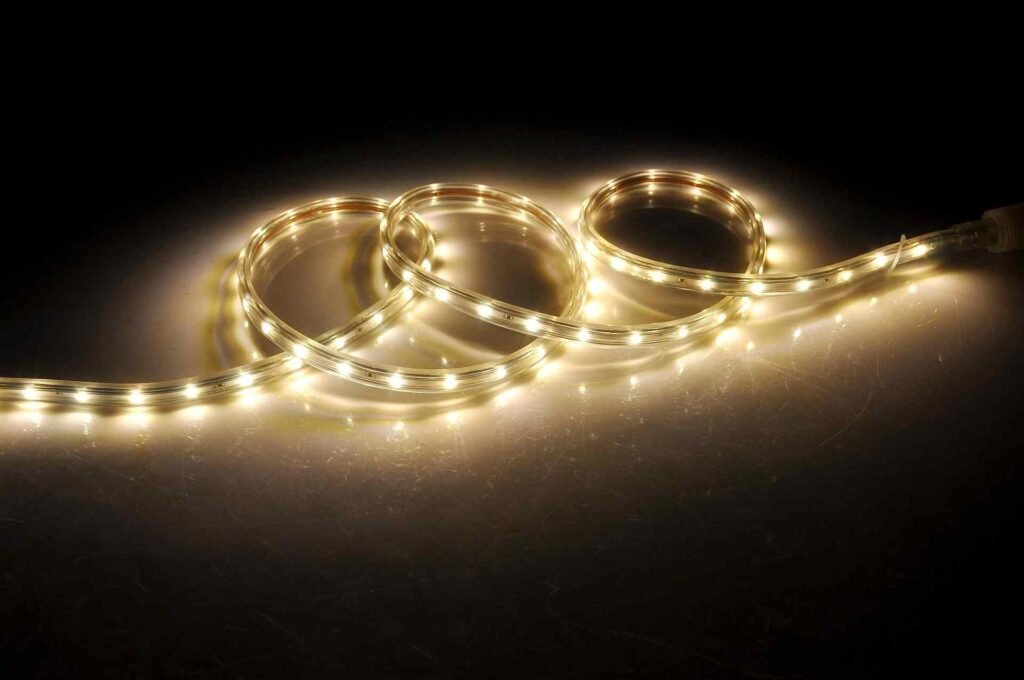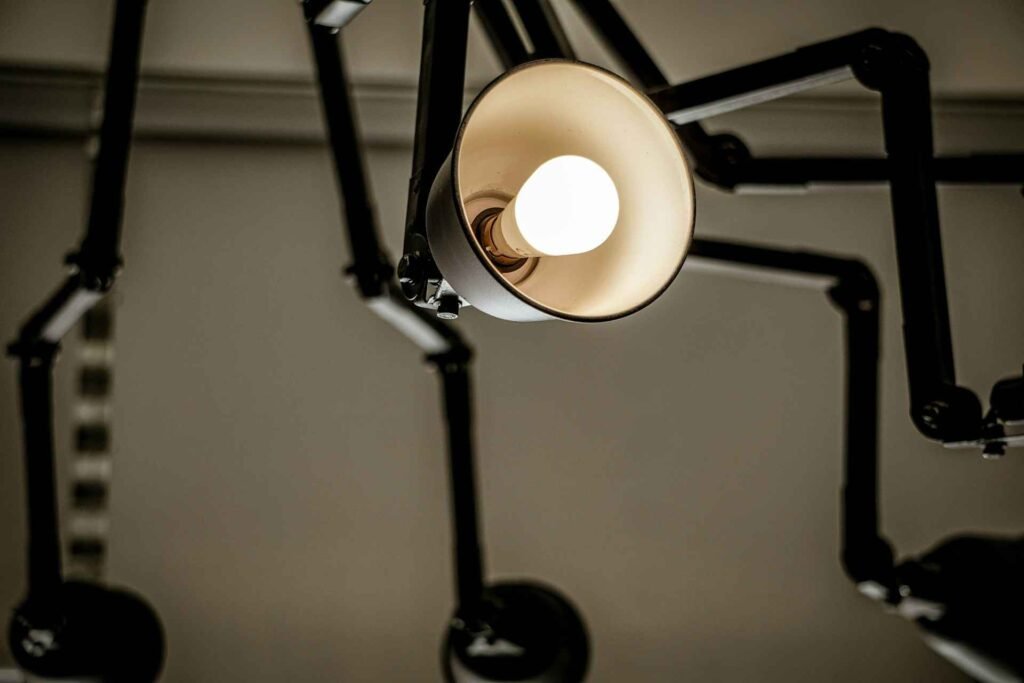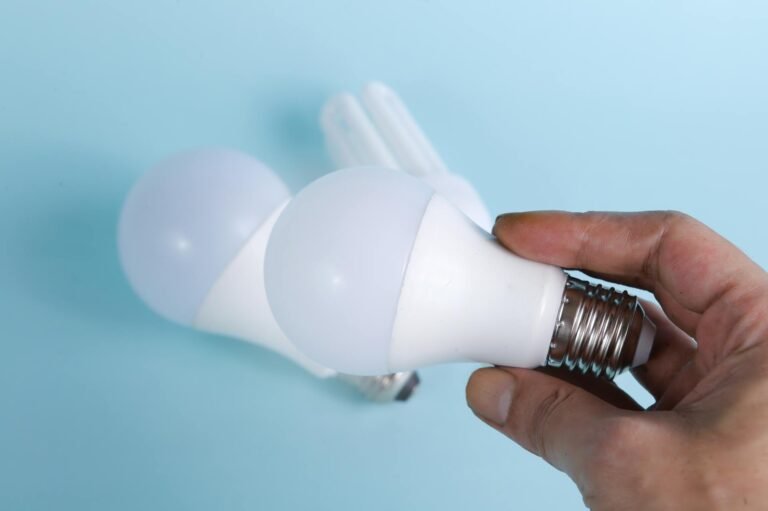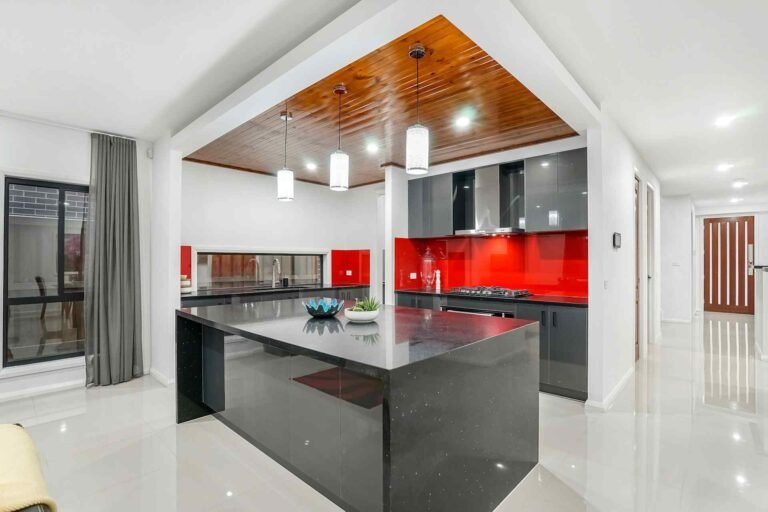Can You Dim LED Lights? What Works and What Doesn’t

Ever found yourself squinting at your computer screen under harsh overhead lighting, or struggling to focus during those late-night work sessions when the room feels more like a surgical theater than a cozy workspace? The good news is that modern LED technology has evolved to give us incredible control over our lighting environment, but the world of dimmable LEDs can feel surprisingly complex for something that should be as simple as turning a dial.
Let’s dive into everything you need to know about dimming LED lights and how to transform your workspace into a productivity haven with just the right amount of illumination.
Understanding LED Dimming: The Basics You Need to Know
The short answer to “can you dim LED lights” is a resounding yes, but there’s a catch that many people discover the hard way. Not all LED lights are created equal when it comes to dimming capabilities. Unlike traditional incandescent bulbs that could work with virtually any dimmer switch, LEDs are a bit more particular about their dimming partners.
Can LED lights be dimmed? Absolutely, but only if they’re specifically designed for it. The technology behind LED dimming is fundamentally different from the old-school incandescent approach. Traditional bulbs dimmed by reducing the electrical current flowing through the filament, but LEDs require more sophisticated control methods to achieve smooth, flicker-free dimming.
Modern dimmable LEDs use pulse-width modulation (PWM) or constant current reduction to achieve their dimming effects. PWM rapidly switches the LED on and off at frequencies too fast for the human eye to detect, creating the illusion of dimming. It’s like having a strobe light that flickers thousands of times per second, but your brain perceives it as steady, dimmed light.
Are All LED Lights Dimmable? Separating Fact from Fiction
Here’s where things get interesting, and unfortunately, where many people make costly mistakes. Are all LED lights dimmable? Not by a long shot. In fact, connecting a non-dimmable LED to a dimmer switch can lead to some pretty frustrating results: flickering, buzzing, premature bulb failure, or the dreaded “minimum brightness” problem where your lights refuse to dim below a certain point.
Dimmable LEDs are specifically engineered with additional circuitry that allows them to communicate properly with dimmer switches. This extra technology does add to the manufacturing cost, which is why all LED bulbs aren’t dimmable by default. Manufacturers have to make a conscious choice to include dimming capabilities, and they clearly label their products accordingly.
The key is always checking the packaging or product specifications before making your purchase. Look for clear indicators like “dimmable,” “compatible with dimmer switches,” or specific dimmer compatibility lists. Some manufacturers even provide recommended dimmer switch models to ensure optimal performance.
Types of Dimmable LED Solutions for Your Workspace
Traditional LED Bulbs
Can you dim LED bulbs in standard fixtures? Yes, if you choose the right ones. Dimmable LED bulbs are available in virtually every shape and size you can imagine, from standard A19 bulbs for desk lamps to specialized shapes for unique fixtures.
When shopping for dimmable LED bulbs, pay attention to the dimming range. Quality dimmable LEDs can typically dim down to about 10-20% of their full brightness, giving you excellent control over your workspace ambiance. The best dimmable LED desk lamps often feature bulbs specifically chosen for their smooth dimming performance and wide dimming range.
LED Strip Lights
Strip lights have become incredibly popular for workspace lighting, offering versatility that traditional bulbs simply can’t match. Can LED lamps be dimmed when they’re in strip form? Absolutely, and they often provide even more control options than traditional bulbs.

Many LED strips come with dedicated controllers that offer not just dimming, but color temperature adjustment and even color changing capabilities. These strips are perfect for under-cabinet lighting, monitor backlighting, or creating ambient lighting zones in your workspace.
Smart LED Solutions
The rise of smart home technology has revolutionized how you dim LED lights. Smart dimmable LEDs can be controlled through smartphone apps, voice commands, or even automated schedules. Some advanced models can automatically adjust their brightness based on the time of day or ambient light levels in your room.
Dimmer Switch Compatibility: Getting the Perfect Match
Not all dimmer switches are created equal, and compatibility issues are the most common source of LED dimming problems. Traditional incandescent dimmers often struggle with the low power draw of LEDs, leading to poor performance.
Can an LED light be dimmed with any dimmer? Unfortunately, no. You’ll want to look for dimmers specifically designed for LED loads. These specialized dimmers are engineered to work with the unique electrical characteristics of LED lights, providing smooth, flicker-free dimming across the full range.
Here’s a quick compatibility guide:
| Dimmer Type | LED Compatibility | Best For |
|---|---|---|
| Traditional Incandescent | Poor | Avoid with LEDs |
| LED-Compatible Trailing Edge | Excellent | Most LED bulbs |
| Leading Edge (TRIAC) | Good | Some LED bulbs |
| Smart Dimmers | Excellent | Smart LED systems |
| 0-10V Dimming | Excellent | Commercial LED strips |
When selecting a dimmer, always check the minimum and maximum wattage ratings. LED bulbs draw much less power than incandescent bulbs, and many traditional dimmers have minimum loads that are too high for LED applications.
Troubleshooting Common LED Dimming Issues
Even with the right equipment, you might encounter some hiccups along the way. Here are the most common issues and their solutions:
Flickering at Low Brightness
If your LEDs flicker when dimmed to low levels, it’s usually a compatibility issue between the dimmer and the LED driver. The solution often involves either upgrading to a higher-quality dimmer designed for LEDs or switching to LED bulbs specifically tested with your dimmer model.
Limited Dimming Range
Some LED and dimmer combinations won’t dim below 30-40% brightness, which can be frustrating when you’re trying to create subtle mood lighting. This often occurs when the dimmer’s minimum load requirement doesn’t match well with the LED’s power consumption.
Buzzing or Humming Sounds
Audible noise during dimming usually indicates electrical interference between the dimmer and LED driver. Higher-quality dimmers and LEDs typically have better noise suppression circuitry.
Creating the Perfect Workspace Lighting Setup
The ability to dim your LED lights opens up a world of possibilities for creating the ideal work environment. Different tasks require different lighting levels, and having dimming control allows you to optimize your space throughout the day.
For detail-oriented work like reading or writing, you’ll want bright, focused lighting. Our article on how many lumens you need for a desk lamp can help you determine the right brightness levels for different activities. During video calls, softer, more diffused lighting often works better for creating a professional appearance on camera.

Consider implementing multiple dimming zones in your workspace. You might have bright task lighting over your desk, medium ambient lighting for general room illumination, and subtle accent lighting for creating a cozy atmosphere during breaks. USB powered desk lights often offer convenient dimming controls without requiring electrical modifications to your space.
Energy Efficiency and Cost Considerations
One of the biggest advantages of dimmable LEDs is their energy efficiency, even when dimmed. Unlike incandescent bulbs, which still consume significant power when dimmed, LEDs reduce their energy consumption proportionally with their light output. Dim an LED to 50% brightness, and it typically uses about 50% of its full power.
This efficiency extends the already impressive lifespan of LED bulbs. Quality dimmable LEDs can last 25,000 to 50,000 hours while maintaining smooth dimming performance throughout their operational life.
Installation and Setup Tips
Getting your dimmable LED system up and running doesn’t have to be complicated, but a few key considerations will ensure optimal performance from day one.
First, always turn off power at the circuit breaker before installing new dimmer switches. Even if you’re comfortable with basic electrical work, LED dimmers often have different wiring requirements than traditional models.
When installing multiple dimmable LEDs on the same circuit, make sure your dimmer is rated for the total load. While individual LED bulbs draw very little power, the cumulative load of multiple fixtures can add up.
Pay attention to the order of installation. Install your dimmer switch first, then test it with a single LED bulb before adding additional fixtures. This approach makes troubleshooting much easier if compatibility issues arise.
Future-Proofing Your Lighting Investment
The world of LED technology continues to evolve rapidly. When selecting dimmable LED solutions for your workspace, consider future expandability and upgrade options.
Look for systems that support common protocols like Zigbee, Z-Wave, or Wi-Fi connectivity. These standards ensure compatibility with future smart home devices and provide options for expanding your lighting control system over time.
Some newer LED systems offer firmware updates, allowing manufacturers to improve performance and add new features long after your initial purchase. While these advanced features might seem like overkill today, they can add significant value as your lighting needs evolve.
Frequently Asked Questions
Can you dim any LED light?
No, only LED lights specifically designed and labeled as “dimmable” can be safely dimmed. Using non-dimmable LEDs with dimmer switches can cause flickering, buzzing, reduced lifespan, or complete failure of the bulbs.
What happens if you put a non-dimmable LED on a dimmer?
Non-dimmable LEDs connected to dimmers typically exhibit poor performance including flickering, limited dimming range, audible buzzing, or they may not work at all. In some cases, the incompatibility can damage either the LED or the dimmer switch.
Do dimmable LEDs use less electricity when dimmed?
Yes, unlike incandescent bulbs, dimmable LEDs consume proportionally less electricity when dimmed. If you dim an LED to 25% brightness, it typically uses approximately 25% of its full power consumption.
Why do some LED lights flicker when dimmed?
LED flickering during dimming usually results from incompatibility between the LED driver and the dimmer switch, or using a dimmer not designed for LED loads. The solution typically involves upgrading to LED-compatible dimmers or selecting LEDs specifically tested with your dimmer model.
Can you use regular dimmer switches with LED bulbs?
Traditional incandescent dimmer switches often don’t work well with LED bulbs due to different electrical characteristics. For best results, use dimmer switches specifically designed for LED loads, which provide better compatibility and performance.
Conclusion
So there you have it, the complete scoop on LED dimming that’ll transform your workspace from “office dungeon” to “productivity paradise.” While the world of dimmable LEDs might seem like it requires an engineering degree to navigate, the reality is much simpler once you understand the basics.
Remember, the key to LED dimming success lies in choosing compatible components from the start. Yes, dimmable LEDs and compatible dimmer switches might cost a bit more upfront, but the flexibility, energy savings, and sheer convenience they provide make them worth every penny. Plus, your future self will thank you during those late-night work sessions when you can create the perfect ambiance with just a simple adjustment.
Now go forth and dim those lights like the lighting wizard you were meant to be!
Looking for more? Check out our desk lighting category for more articles and guides that may interest you!
Featured image credit: Photo by Ruthson Zimmerman on Unsplash
This content is for informational purposes only. Please verify current information directly on the retailer’s site before purchasing.






